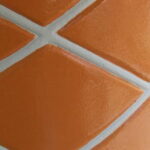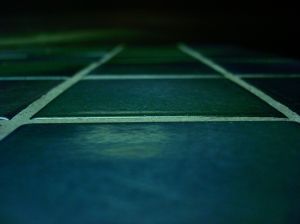Ceramic tile flooring is popular and practical in places such as a kitchen, bathroom, basement and a sun room. They are easy to clean and are quite durable compared to many other flooring materials. There are a variety of textures, colors, sizes and designs to chose from. They can be a bit on the expensive side to have installed, so why not install your new ceramic floor yourself and save a load of money. The following are instructions on installation.
The first thing to do is to gather all of the supplies that you will need for this project so everything is close at hand before you start. This way you will not have to take time out to go find supplies in the middle of the project. You will need the following items:
Floor sealer (containing White distilled vinegar)
Ceramic tiles
Plywood
Grout floater or sponge
Grout
Drill
Galvanized screws
Tape measure
Tile adhesive
Notched trowel
Putty knife
Tile spacers
Utility knife
Tile cutter or tile snapper
1. Take some plywood and place it over the current floor. This will serve as an under lay for the tiles of ceramic and will create a smooth flat surface.
2. Measure and mark with a pencil, six inch lengths on the plywood, then take an electric drill and drill some galvanized screws all the way through the plywood so that it screws it securely to the original floor so that it will not move during the installation process.
3. Using a tape measure, measure the floor from wall to wall going both directions (both width and length). Use this information to figure out the exact center of the floor and mark it on the plywood with a pencil. This will be where you place the first ceramic tile.
4. Take some tile adhesive and apply it carefully onto the place that you marked in step #3 using a square-notched trowel. Proceed to place the first square of ceramic tile on top of the freshly applied adhesive.
5. Apply some more adhesive next to the first installed tile, and add another two tiles next to the first one, leaving a small gap in between tiles to leave room to put in the spacers.
6. Take two tile spacers and place one in between each of the tiles that are next to each other. Carefully push the tiles so that they fit snugly together around the spacers. Note that the purpose of the spacers are to leave even lines for your grout for a smooth look.
7. Add more adhesive, lay two more tiles, add the spacers and push the tiles together the same way the last step was done. Repeat this process until you reach the end of the floor in all directions. There will likely be spaces at the very end where you will need to measure and cut some of the tiles around the edges of the room.
8. Take a tape measure and measure the distance between the last full tile and the wall on each of the four sides of the room.
9. Measure the length of the measurement of the previous step and mark carefully onto a piece of tile. Do this carefully in a straight line with a utility knife to get the exact correct size, the cut the newly marked tile with a tile cutter and apply adhesive then lay the tile in the proper place. Repeat this process along all 4 sides of the room until complete.
10. Allow the newly adhered tiles to set and dry for 24 hours before moving on to the next step.
11. Remove the spacers from in between the tiles.
12. Carefully read the instructions on the grout package and religiously follow the instruction on preparing it. You may also opt to use grout that is pre-mixed.
13, Take a sponge and spread the grout gently in between the tile where the spaces are left from the tile spacers. Wipe off all of the excess grout from the tiles as you go along so it will not dry on the actual tiles.
14. Allow the grout to dry completely, giving it 24 hours before proceeding to the next step in the process.
15. Take some distilled vinegar and mix with water. Use this to scrub the floor and remove any residual grout that may have gotten onto the tiles. Repeat this step until you are certain that all of the grout is scrubbed clean from the ceramic.
16. Carefully and thoroughly apply some ceramic tile floor sealer onto the entire floor and allow it to dry completely before walking on it.
Resources:
http://www.411homerepair.com/do-it-yourself/floors-tile/installing-ceramic-tile.php




